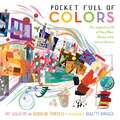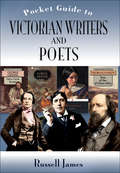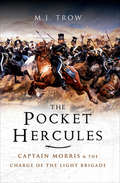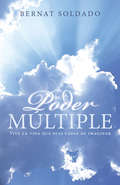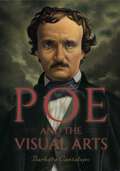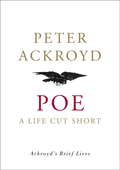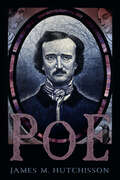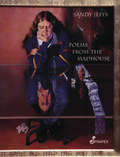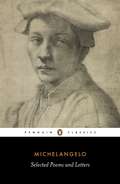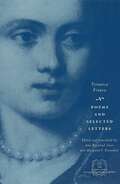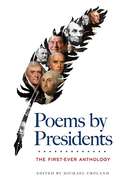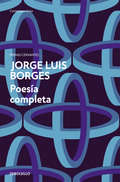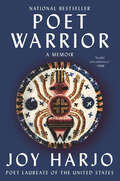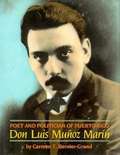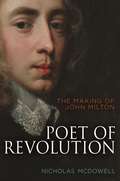- Table View
- List View
Pocket Bios: Isaac Newton (Pocket Bios)
by Al BerengerA colorfully illustrated, pocket-size picture book biography of mathematician and physicist Isaac Newton.Best known for "discovering gravity" and formulating the laws of motion, Isaac Newton is often hailed as one of the most influential physicists of all time. From the apple incident that lead to his famous mathematical description of gravity, to the invention of the first reflecting telescope, and beyond, follow this extraordinary man's life and accomplishments.Pocket Bios are full of personality, introducing readers to fascinating figures from history with simple storytelling and cheerful illustrations. Titles include men and women from history, exploration, the sciences, the arts, the ancient world, and more.
Pocket Bios: Joan of Arc (Pocket Bios)
by Al BerengerA colorfully illustrated, pocket-size picture book biography of martyr and Roman Catholic saint, Joan of Arc.Joan of Arc was a teenager known for her instrumental role in the Hundred Years' War between the rulers of France and England. Guided by religious visions, she fearlessly helped King Charles VII win back the French throne from the British. After being captured and burned at the stake, she was declared a martyr and canonized as a saint in the Roman Catholic church. Joan of Arc is a national heroine and patron saint, as her legend remains popular and fascinating to this day. About the Pocket Bios series:Pocket Bios are full of personality, introducing readers to fascinating figures from history with simple storytelling and cheerful illustrations. Titles include men and women from history, exploration, the sciences, the arts, the ancient world, and more. Looking for biographies about women in history? Don't miss the Pocket Bios about Princess Diana, Cleopatra, Coco Chanel, Rosa Parks, Marie Antoinette, and Pocahontas.
Pocket Bios: John F. Kennedy (Pocket Bios)
by Al BerengerA colorfully illustrated, pocket-size picture book biography about John F. Kennedy, 35th President of the United States.John F. Kennedy was an incredibly popular American politician who served as 35th President of the United States from 1961 to 1963, during the Cold War. As president, he most notably supported the African American Civil Rights Movement, authorized the Bay of Pigs invasion on the southern coast of Cuba, and dealt with the Cuban Missile Crisis. His family was greatly admired around the world, and his tragic assassination in Dallas, Texas, had a lasting effect on the American psyche. About the Pocket Bios series:Pocket Bios are full of personality, introducing readers to fascinating figures from history with simple storytelling and cheerful illustrations. Titles include men and women from history, exploration, the sciences, the arts, the ancient world, and more. Looking for biographies about political figures? Don't miss the Pocket Bios for Abraham Lincoln, Nelson Mandela, Rosa Parks, Martin Luther King Jr., and Gandhi.
Pocket Bios: Marie Curie (Pocket Bios)
by Al BerengerA colorfully illustrated, pocket-size picture book biography of influential physicist and chemist Marie Curie.Marie Curie, the first woman ever to win a Nobel Prize and only person to win it in two different scientific fields, was a physicist and chemist. As she conducted pioneering research, Marie Curie coined the term "radioactivity," developed some of the first techniques for isolating radioactive isotopes. She also discovered two elements: polonium and radium, and developed mobile X-ray units for use in field hospitals during World War I. In 1934, at the age of sixty-six, she died of complications from long-term exposure to radiation. Pocket Bios are full of personality, introducing readers to fascinating figures from history with simple storytelling and cheerful illustrations. Titles include men and women from history, exploration, the sciences, the arts, the ancient world, and more.
Pocket Bios: Martin Luther King, Jr. (Pocket Bios)
by Al BerengerMartin Luther King, Jr., one of the most prominent leaders of the civil rights movement, is best known for his dedication to nonviolent resistance and civil disobedience. He received the Nobel Peace Prize for his efforts in combating racial inequality and organized many notable events such as the Montgomery bus boycott and Selma-to-Montgomery marches. He posthumously received the Presidential Medal of Freedom and Congressional Gold Medal, and is an international icon to this day. Pocket Bios are full of personality, introducing readers to fascinating figures from history with simple storytelling and cheerful illustrations. Titles include men and women from history, exploration, the sciences, the arts, the ancient world, and more.
Pocket Bios: Muhammad Ali (Pocket Bios)
by Al BerengerA colorfully illustrated, pocket-size picture book biography of the famous professional boxer and activist Muhammad Ali.Muhammad Ali remains one of the most inspiring and celebrated sports figures today. A gold-medal Olympian and multi-title winning boxer, Ali was an important civil rights activist. From his childhood growing up in Louisville, Kentucky, to his amateur boxing training beginning at the age of 12, to his achievements within the professional boxing ring and beyond as a conscientious objector, follow this extraordinary man's life and accomplishments.Pocket Bios are full of personality, introducing readers to fascinating figures from history with simple storytelling and cheerful illustrations. Titles include men and women from history, exploration, the sciences, the arts, the ancient world, and more.
Pocket Bios: Neil Armstrong (Pocket Bios)
by Al BerengerA colorfully illustrated, pocket-size picture book biography of the first man to walk on the moon, astronaut Neil Armstrong.Neil Armstrong is an American astronaut most famous for being the first person to walk on the moon: "One small step for man, one giant leap for mankind." Before enrolling in the NASA Astronaut Corps in 1962, Armstrong was an officer in the U.S. Navy and served in the Korean War. Follow this extraordinary man's life and accomplishments, from childhood to space and back again.Pocket Bios are full of personality, introducing readers to fascinating figures from history with simple storytelling and cheerful illustrations. Titles include men and women from history, exploration, the sciences, the arts, the ancient world, and more.
Pocket Bios: Nelson Mandela (Pocket Bios)
by Al BerengerA colorfully illustrated, pocket-size picture book biography of activist, philanthropist, and South African President Nelson Mandela.Nelson Mandela was a South African revolutionary, activist, politician, and philanthropist who opposed apartheid and served as the president of South Africa as the country's first black head of state and the first representative elected democratically. He devoted much of his time in office to dismantling apartheid law and battling institutionalized racism in South Africa. He is the recipient of more than 250 honors worldwide, including the Nobel Peace Prize.Pocket Bios are full of personality, introducing readers to fascinating figures from history with simple storytelling and cheerful illustrations. Titles include men and women from history, exploration, the sciences, the arts, the ancient world, and more.
Pocket Bios: Pablo Picasso (Pocket Bios)
by Al BerengerA colorfully illustrated, pocket-size picture book biography of famed artist Pablo Picasso.Pablo Picasso was co-founder of the Cubist movement, and an inventor of art forms such as constructed sculpture and collage. An extremely prolific and multi-faceted artist, he produced a wide variety of extraordinary artworks throughout his long lifetime, including the Guernica and The Young Ladies of Avignon oil paintings. His creative, revolutionary style continues to mesmerize the world to this day, and he is one of the most influential and universally renowned artists of the 20th century.About the Pocket Bios series: Pocket Bios are full of personality, introducing readers to fascinating figures from history with simple storytelling and cheerful illustrations. Titles include men and women from history, exploration, the sciences, the arts, the ancient world, and more.Love art? Don't miss the Pocket Bios about Frida Kahlo and Vincent van Gogh.
Pocket Bios: Princess Diana (Pocket Bios)
by Al BerengerA colorfully illustrated, pocket-size picture book biography of famous British royal, Princess Diana. Princess Diana was the wildly popular first wife of Charles, Prince of Wales. Known as "the People's Princess," she was involved in many charities, including the British Deaf Association, and supported other controversial causes like AIDS and the ban of landmines. From her engagement to Prince Charles, Princess Di had a special connection with the public in England and around the world. Her tumultuous marriage was subject to aggressive media attention, and she was forever memorialized in the hearts of the British people after her death in a tragic car crash in Paris.About the Pocket Bios series:Pocket Bios are full of personality, introducing readers to fascinating figures from history with simple storytelling and cheerful illustrations. Titles include men and women from history, exploration, the sciences, the arts, the ancient world, and more. Want to know more about women in history? Don't miss the Pocket Bios about Cleopatra, Rosa Parks, Anne Frank, Marie Antoinette, Joan of Arc, and Pocahontas.
Pocket Full of Colors: The Magical World Of Mary Blair, Disney Artist Extraordinaire
by Amy Guglielmo and Jacqueline TourvilleAmy Guglielmo, Jacqueline Tourville, and Brigette Barrager team up to tell the joyful and unique story of the trailblazing Disney artist Mary Blair. Mary Blair lived her life in color: vivid, wild color. From her imaginative childhood to her career as an illustrator, designer, and animator for Walt Disney Studios, Mary wouldn't play by the rules. At a time when studios wanted to hire men and think in black and white, Mary painted twinkling emerald skies, peach giraffes with tangerine spots, and magenta horses that could fly. She painted her world.
Pocket Guide to Victorian Writers and Poets (The\pocket Guide Ser.)
by Russell JamesA fact-filled reference for discovering, and learning more about, the literary greats of the nineteenth century. The Victorian era produced many famous writers and poets, including Dickens, Thackeray, H.G. Wells, and Tennyson. Magazines like The Strand launched famous creations such as Conan Doyle&’s Sherlock Holmes, whose cliffhanger stories were told in part-works to add to the excitement. And the poetry was epic—Tennyson&’s Morte d&’Arthur and The Lady of Shalott tapped into the Pre-Raphaelite style so popular in the art of the day. In this guide, Russell James has explored the role of the Victorian writer and their genres, from Dickens&’s desire to correct social wrongs and expose poverty to H.G. Wells&’s desire to escape the modern world. The responsibility of the Victorian poet is also revealed from romantic declaration and escapism to heroism and historical commemorations—would modern generations know about the Charge of the Light Brigade if Tennyson hadn&’t immortalized it? Together with A–Zs of writers and poets, this is a must-read book for everyone who loves good writing and wants to discover more.
Pocket Hercules: Captain Morris and the Charge of the Light Brigade
by M.J. TrowWilliam Morris was in the front rank during the Charge of the Light Brigade. He was one of the first horsemen to reach the Russian guns. This is his story. M.J. Trow's vivid biography of this typical Victorian soldier gives a fascinating insight into the officer class that fought the Crimean War. In recording Morris's experiences during a notorious campaign, the author reveals much about the hidebound character of the British army of that era. The portraits of Morris's fellow officers and commanders - men like Nolan, Raglan and Lucan - are telling, as is the contrast between Morris and his incompetent superior Cardigan. The author meticulously recreates Morris's life and, through him, the lives of a generation of professional British soldiers.
Poder múltiple: Vive la vida que seas capaz de imaginar
by Bernat SoldadoPáginas mágicas. La inspiración que buscabas está aquí. ¿Sientes que tus sueños son inalcanzables? Este libro te demostrará que te equivocas. La historia que tienes en tus manos no es el guión de una película. Es el relato de los últimos diez años que el autor ha vivido hasta ahora. Embárcate con él en Poder múltiple. Recorre laberintos sin salida en los que todo está perdido, y nuevos mundos en los que todo es posible. Bernat Soldado utiliza su historia para mostrarte cómo aprendió las once lecciones que lo llevaron hasta sus sueños. También comparte contigo el manual de instrucciones de los once poderes que encontrarás junto a esas lecciones. Si lees este libro, ya no te quedará ninguna duda de que la realidad supera la ficción.
Poe and the Visual Arts (G - Reference, Information and Interdisciplinary Subjects)
by Barbara CantalupoAlthough Edgar Allan Poe is most often identified with stories of horror and fear, there is an unrecognized and even forgotten side to the writer. He was a self-declared lover of beauty who “from childhood’s hour . . . [had] not seen / As others saw.” Poe and the Visual Arts is the first comprehensive study of how Poe’s work relates to the visual culture of his time. It reveals his “deep worship of all beauty,” which resounded in his earliest writing and never entirely faded, despite the demands of his commercial writing career. Barbara Cantalupo examines the ways in which Poe integrated visual art into sketches, tales, and literary criticism, paying close attention to the sculptures and paintings he saw in books, magazines, and museums while living in Philadelphia and New York from 1838 until his death in 1849. She argues that Poe’s sensitivity to visual media gave his writing a distinctive “graphicality” and shows how, despite his association with the macabre, his enduring love of beauty and knowledge of the visual arts richly informed his corpus.
Poe: A Life Cut Short
by Peter AckroydGothic, mysterious, theatrical, fatally flawed, and dazzling, the life of Edgar Allan Poe, one of America's greatest and most versatile writers, is the ideal subject for Peter Ackroyd. Poe wrote lyrical poetry and macabre psychological melodramas; invented the first fictional detective; and produced pioneering works of science fiction and fantasy. His innovative style, images, and themes had a tremendous impact on European romanticism, symbolism, and surrealism, and continue to influence writers today. In this essential addition to his canon of acclaimed biographies, Peter Ackroyd explores Poe's literary accomplishments and legacy against the background of his erratic, dramatic, and sometimes sordid life. Ackroyd chronicles Poe's difficult childhood, his bumpy academic and military careers, and his complex relationships with women, including his marriage to his thirteen-year-old cousin. He describes Poe's much-written-about problems with gambling and alcohol with sympathy and insight, showing their connections to Poe's childhood and the trials, as well as the triumphs, of his adult life. Ackroyd's thoughtful, perceptive examinations of some of Poe's most famous works shed new light on these classics and on the troubled and brilliant genius who created them.
Poe: Beyond Gothicism (Willie Morris Books in Memoir and Biography)
by James M. HutchissonEdgar Allan Poe (1809–1849) was an American original—a luminous literary theorist, an erratic genius, and an analyst par excellence of human obsession and compulsion. The scope of his literary achievements and the dramatic character of Poe’s life have drawn readers and critics to him in droves. And yet, upon his death, one obituary penned by a literary enemy in the New York Daily Tribune cascaded into a lasting stain on Poe’s character, leaving a historic misunderstanding. Many remember Poe as a difficult, self-pitying, troubled drunkard often incapable of caring for himself. Poe reclaims the Baltimore and Virginia writer’s reputation and power, retracing Poe’s life and career. Biographer and critic James M. Hutchisson captures the boisterous worlds of literary New York and Philadelphia in the 1800s to understand why Poe wrote the way he did and why his achievement was so important to American literature. The biography presents a critical overview of Poe’s major works and his main themes, techniques, and imaginative preoccupations. This portrait of the writer emphasizes Poe’s southern identity; his existence as a workaday journalist in the burgeoning magazine era; his authority as a literary critic and cultural arbiter; his courtly demeanor and sense of social propriety; his advocacy of women writers; his adaptation of art forms as diverse as the so-called “gutter press” and the haunting rhythms of African American spirituals; his borrowing of imagery from such popular social movements as temperance and freemasonry; and his far-reaching, posthumous influence.
Poems From the Madhouse
by Sandy JeffsA powerful collection of poetry about schizophrenia, with an introduction for young people, discussing the causes/effects .
Poems and Letters: Selections, with the 1550 Vasari Life
by MichelangeloMichelangelo Buonarroti (1475-1564) is universally celebrated as one of the greatest artists of all time, yet iconic Renaissance creator was also a prolific and gifted poet. The verses collected here are primarily devoted to love and religion. Intense and passionate, the love poems focus on two figures: Tommaso de Cavalieri and Vittoria Colonna; with the sonnets and madrigals dedicated to de Cavalieri revealing a highly charged, homoerotic fervour - previously obscured in the original versions. Michelangelo's later religious poetry moves away from his earlier wordly concerns, while his letters provide a fasicnating insight into his fanily relations and day-to-day life as a working artist. The result is a revealing picture of one of the towering figures of the Renaissance.
Poems and Selected Letters (The Other Voice in Early Modern Europe)
by Veronica FrancoVeronica Franco (whose life is featured in the motion picture Dangerous Beauty) was a sixteenth-century Venetian beauty, poet, and protofeminist. This collection captures the frank eroticism and impressive eloquence that set her apart from the chaste, silent woman prescribed by Renaissance gender ideology. As an "honored courtesan", Franco made her living by arranging to have sexual relations, for a high fee, with the elite of Venice and the many travelers—merchants, ambassadors, even kings—who passed through the city. Courtesans needed to be beautiful, sophisticated in their dress and manners, and elegant, cultivated conversationalists. Exempt from many of the social and educational restrictions placed on women of the Venetian patrician class, Franco used her position to recast "virtue" as "intellectual integrity," offering wit and refinement in return for patronage and a place in public life. Franco became a writer by allying herself with distinguished men at the center of her city's culture, particularly in the informal meetings of a literary salon at the home of Domenico Venier, the oldest member of a noble family and a former Venetian senator. Through Venier's protection and her own determination, Franco published work in which she defended her fellow courtesans, speaking out against their mistreatment by men and criticizing the subordination of women in general. Venier also provided literary counsel when she responded to insulting attacks written by the male Venetian poet Maffio Venier. Franco's insight into the power conflicts between men and women and her awareness of the threat she posed to her male contemporaries make her life and work pertinent today.
Poems by Presidents: The First-Ever Anthology
by Heidi Gagnon"Well-written, thoroughly researched, and impeccably organized, Poems by Presidents explores an intriguing and unexpected side to many American presidents: they wrote poetry! In this excellent anthology of presidential poems, Michael Croland offers us a new way to celebrate some of our most celebrated leaders." —Susan Katz, author of The President’s Stuck in the Bathtub. This first-ever anthology features poems by eleven presidents who, through good times and bad, turned to poetry to express themselves. This compelling collection brings presidents’ literary pursuits to light, unveiling their deepest thoughts and emotions. Highlights include George Washington’s teenage romantic yearnings, Thomas Jefferson’s death-bed adieu, John Quincy Adams’s sonnet memorializing his father, Abraham Lincoln’s mockery of the Confederacy, Woodrow Wilson’s humorous limericks, Warren G. Harding’s steamy love poems to his mistress, and Ronald Wilson Reagan’s existential reflections. Appendixes explore additional presidents who wrote poetry, misattributions, prose formatted as verse, and fondness for poetry. Poems by Presidents is a rewarding resource for poetry lovers and readers interested in presidential biographies and American history. "From Madison’s collegiate satires to Harding’s racy romantic rhymes, this anthology has something to surprise and delight even the most dedicated history buff. It will teach you something about our presidents’ personal lives, their poetic talents, and even their political ambitions." —Craig Fehrman, author of Author in Chief "This distinctive collection is a pleasure to read and enjoy. It provides another dimension to our awareness of the personalities and talents of many of our presidents." —Fred Kaplan, author of His Masterly Pen: A Biography of Jefferson the Writer "Michael Croland has assembled an interesting and unexpected anthology of presidential poetry. Poems by Presidents leaves the reader with a better understanding of the concealed humanity often buried within the seemingly stoic men who have held our nation’s highest office." —Michael B. Costanzo, author of Author in Chief "This unique collection by US presidents, featuring poems ranging from spiritual to humorous to erotic, is surprising, fascinating, and humanizing." —Marilyn Singer, author of Rutherford B., Who Was He?: Poems about Our Presidents "A wonderful volume, full of keen insights into a wide array of American presidents. . . . The superb focus of this book brings fascinating details to light." —Jonathan Gross, editor of Thomas Jefferson’s Scrapbooks
Poesía completa
by Jorge Luis BorgesAdemás de extraordinario narrador y ensayista, Borges fue un excelente poeta. De hecho, puede decirse que la poesía es el alma de su obra. Indisociable de sus cuentos y ensayos, estos poemas son parte indispensable del universo borgiano y constituyen una indagación paralela a los asuntos que siempre le apasionaron: los libros, la memoria, los laberintos, los espejos, Inglaterra, el amor o la eternidad.Dueño de un fino oído y una deslumbrante capacidad para crear imágenes memorables, Borges revive en sus grandes poemas la intensidad que recorre la gran tradición occidental desde Homero hasta Eliot.Antes que el sueño (o el terror) tejieraMitologías y cosmogonías,Antes que el tiempo se acuñara en días,El mar, el siempre mar, ya estaba y era.¿Quién es el mar? ¿Quién es aquel violentoY antiguo ser que roe los pilaresDe la tierra y es uno y muchos maresY abismo y resplandor y azar y viento?Quien lo mira lo ve por vez primera,Siempre. Con el asombro que las cosasElementales dejan, las hermosasTardes, la luna, el fuego de una hoguera.¿Quién es el mar, quién soy? Lo sabré el díaUlterior que sucede a la agonía.
Poet Warrior: A Memoir
by Joy HarjoThree-term poet laureate Joy Harjo offers a vivid, lyrical, and inspiring call for love and justice in this contemplation of her trailblazing life. <p><p> Joy Harjo, the first Native American to serve as U.S. poet laureate, invites us to travel along the heartaches, losses, and humble realizations of her "poet-warrior" road. A musical, kaleidoscopic, and wise follow-up to Crazy Brave, Poet Warrior reveals how Harjo came to write poetry of compassion and healing, poetry with the power to unearth the truth and demand justice. <p><p> Harjo listens to stories of ancestors and family, the poetry and music that she first encountered as a child, and the messengers of a changing earth—owls heralding grief, resilient desert plants, and a smooth green snake curled up in surprise. She celebrates the influences that shaped her poetry, among them Audre Lorde, N. Scott Momaday, Walt Whitman, Muscogee stomp dance call-and-response, Navajo horse songs, rain, and sunrise. In absorbing, incantatory prose, Harjo grieves at the loss of her mother, reckons with the theft of her ancestral homeland, and sheds light on the rituals that nourish her as an artist, mother, wife, and community member. <p><p> Moving fluidly between prose, song, and poetry, Harjo recounts a luminous journey of becoming, a spiritual map that will help us all find home. Poet Warrior sings with the jazz, blues, tenderness, and bravery that we know as distinctly Joy Harjo.
Poet and Politician of Puerto Rico: Don Luis Munoz Marin
by Carmen T. Bernier-GrandGrade 5-8. A biography on the life of Puerto Rico's first elected governor. While the beginning of the book focuses on his personal life and desire to be a writer, the latter part concentrates on his political career and efforts to bring about social and political reform in his native land. The man's life is conveyed clearly and chronologically, although the author does not include the exact years of many events within the text, which could lead to some confusion.
Poet of Revolution: The Making of John Milton
by Nicholas McDowellA groundbreaking biography of Milton’s formative years that provides a new account of the poet’s political radicalizationJohn Milton (1608–1674) has a unique claim on literary and intellectual history as the author of both Paradise Lost, the greatest narrative poem in English, and prose defences of the execution of Charles I that influenced the French and American revolutions. Tracing Milton’s literary, intellectual, and political development with unprecedented depth and understanding, Poet of Revolution is an unmatched biographical account of the formation of the mind that would go on to create Paradise Lost—but would first justify the killing of a king.Biographers of Milton have always struggled to explain how the young poet became a notorious defender of regicide and other radical ideas such as freedom of the press, religious toleration, and republicanism. In this groundbreaking intellectual biography of Milton’s formative years, Nicholas McDowell draws on recent archival discoveries to reconcile at last the poet and polemicist. He charts Milton’s development from his earliest days as a London schoolboy, through his university life and travels in Italy, to his emergence as a public writer during the English Civil War. At the same time, McDowell presents fresh, richly contextual readings of Milton’s best-known works from this period, including the “Nativity Ode,” “L’Allegro” and “Il Penseroso,” Comus, and “Lycidas.”Challenging biographers who claim that Milton was always a secret radical, Poet of Revolution shows how the events that provoked civil war in England combined with Milton’s astonishing programme of self-education to instil the beliefs that would shape not only his political prose but also his later epic masterpiece.










